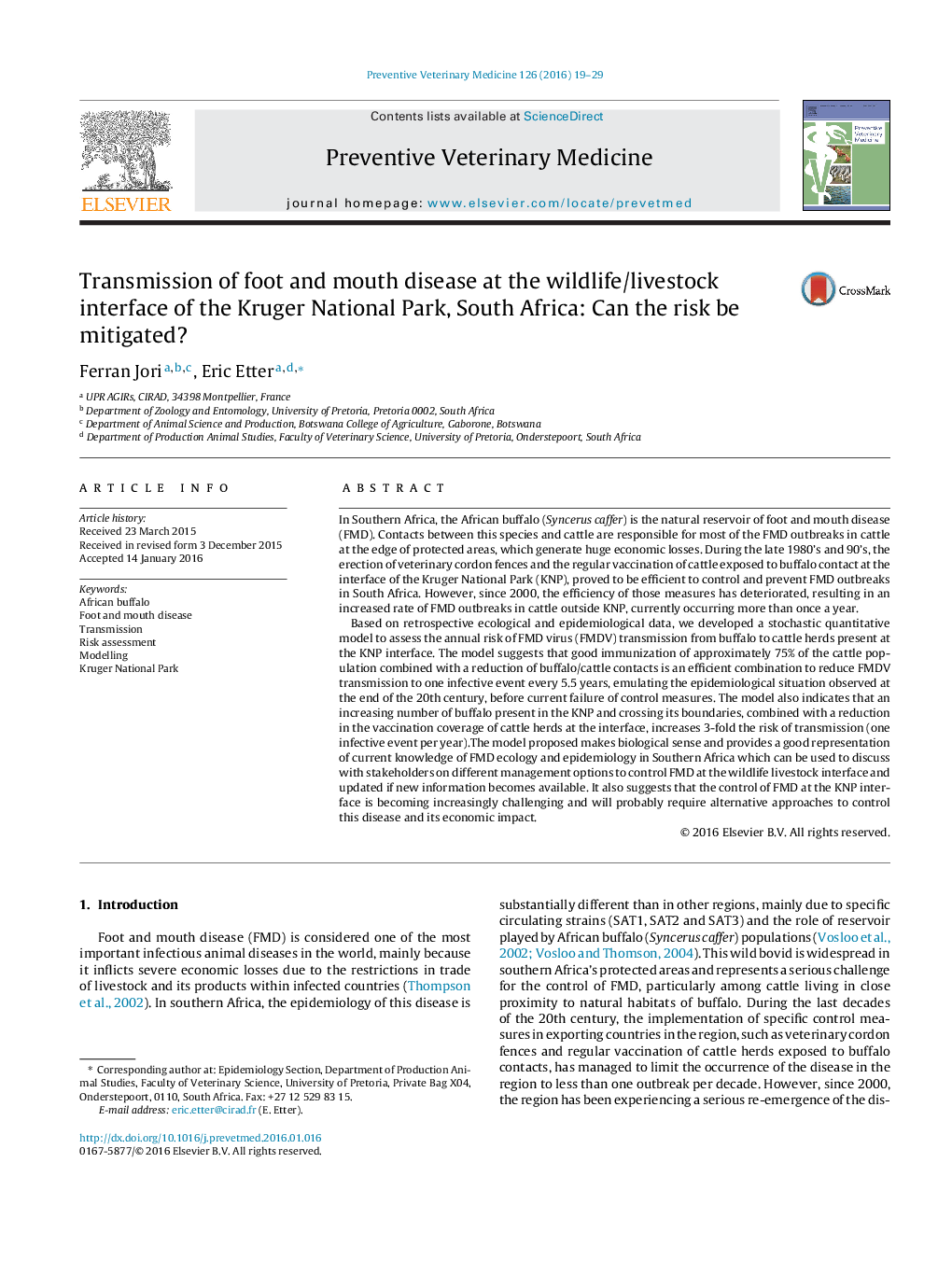| کد مقاله | کد نشریه | سال انتشار | مقاله انگلیسی | نسخه تمام متن |
|---|---|---|---|---|
| 5792949 | 1554162 | 2016 | 11 صفحه PDF | دانلود رایگان |
- Since 2000, the efficacy of foot and mouth disease (FMD) control at the edge of Kruger National Park (KNP) has deteriorated and needs urgent action.
- This model quantifies the risk of FMD transmission from buffalo to cattle and fits with past and current numbers of outbreaks in the study area.
- The model takes into account variability and uncertainty of key ecological and epidemiological parameters linked with FMD transmission.
- Several management and control strategies are presented and their impact in FMD transmission is discussed.
- The model can be used as an assessment tool for control strategies in other wildlife-livestock interface areas in the Southern African region.
In Southern Africa, the African buffalo (Syncerus caffer) is the natural reservoir of foot and mouth disease (FMD). Contacts between this species and cattle are responsible for most of the FMD outbreaks in cattle at the edge of protected areas, which generate huge economic losses. During the late 1980's and 90's, the erection of veterinary cordon fences and the regular vaccination of cattle exposed to buffalo contact at the interface of the Kruger National Park (KNP), proved to be efficient to control and prevent FMD outbreaks in South Africa. However, since 2000, the efficiency of those measures has deteriorated, resulting in an increased rate of FMD outbreaks in cattle outside KNP, currently occurring more than once a year.Based on retrospective ecological and epidemiological data, we developed a stochastic quantitative model to assess the annual risk of FMD virus (FMDV) transmission from buffalo to cattle herds present at the KNP interface. The model suggests that good immunization of approximately 75% of the cattle population combined with a reduction of buffalo/cattle contacts is an efficient combination to reduce FMDV transmission to one infective event every 5.5 years, emulating the epidemiological situation observed at the end of the 20th century, before current failure of control measures. The model also indicates that an increasing number of buffalo present in the KNP and crossing its boundaries, combined with a reduction in the vaccination coverage of cattle herds at the interface, increases 3-fold the risk of transmission (one infective event per year).The model proposed makes biological sense and provides a good representation of current knowledge of FMD ecology and epidemiology in Southern Africa which can be used to discuss with stakeholders on different management options to control FMD at the wildlife livestock interface and updated if new information becomes available. It also suggests that the control of FMD at the KNP interface is becoming increasingly challenging and will probably require alternative approaches to control this disease and its economic impact.
Journal: Preventive Veterinary Medicine - Volume 126, 1 April 2016, Pages 19-29
